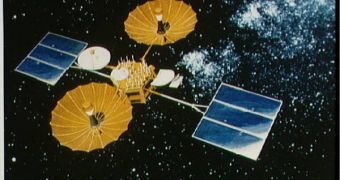On Monday, a senior Air Force official announced that the United States would begin to track all the 800 maneuverable satellites in Earth's orbit, by October 1st. The decision was prompted by the February collision of a US communications satellite with an out-of-service, Soviet-era spacecraft, an accident that left two huge clouds of debris in orbit. These amounts of space junk pose serious threats to both the International Space Station and the shuttles or Soyuz capsules launched for various missions.
That is to say, even the smallest fragments, weighing no more than a few hundred grams, can cause significant damage to the orbital facility, on account of the fact that they travel at very high speeds, which enable them to penetrate the relatively thin walls of the ISS. While Discovery was docked at the space station, it had to maneuver the joint complex out of the path of a large piece of junk, which passed dangerously close to the facility.
Speaking at the Space Foundation's annual National Space Symposium in Colorado Spring, the Chief of the Pentagon's National Security Space Office, Air Force Colonel Dusty Tyson, said that the US Strategic Command and Air Force Space Command would collaborate to expand the number of surveyed satellites, from the current 300 to 800, Reuters reports.
“They're going to stand up a level of capability by 1 October. They hope to be able to provide conjunction analysis on all 800, plus or minus, maneuverable satellites. It was definitely an impetus to get out and get moving faster. Now that the event has happened, there is definitely movement afoot to try to prevent it from happening again,” the official stated, adding that it was February's collision that prompted action on the matter, even though experts had been aware of such risks for quite some time.
It remains to be seen exactly how this higher level of surveillance will affect orbital “traffic,” given that there are countries such as China that do not wish to divulge the location of their craft, or to cooperate with the West if two observatories are to enter a collision course. The official underlined the fact that all operators needed to be capable of reaching each other in case of emergency, so as to be able to maneuver their respective crafts out of each other's way.

 14 DAY TRIAL //
14 DAY TRIAL //